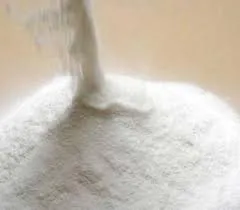
Dec . 05, 2024 14:36 Back to list
re dispersible polymer powder
Understanding Redispersible Polymer Powder Applications and Benefits
Redispersible polymer powder (RDP) is a versatile product that plays a critical role in various construction and adhesive applications. It is essentially a dry powder that, when mixed with water, redistributes to form a stable emulsion. This unique characteristic provides numerous advantages in formulations, particularly in the building materials industry.
What is Redispersible Polymer Powder?
Redispersible polymer powder is produced through the spray-drying of polymer emulsions. These emulsions consist of polymer particles suspended in water. When the water evaporates during the spray-drying process, the result is a fine powder that retains the properties of the original polymer. Upon the addition of water, this powder can re-disperse, allowing for easy incorporation into various formulations.
Common types of polymers used to create RDPs include ethylene-vinyl acetate (EVA), styrene-acrylic, and vinyl acetate-ethylene (VAE) copolymers. Each type offers distinct advantages depending on the intended application, whether it be in tile adhesives, cement-based dry mixes, or renders.
Applications of Redispersible Polymer Powder
1. Construction Industry One of the primary uses of RDP is in the construction sector, particularly in the formulation of tile adhesives and mortars. The addition of RDP enhances the adhesion properties, flexibility, and water resistance of these products, ensuring that tiles remain firmly in place even in humid conditions.
2. Plaster and Coatings RDPs are widely used in plasters and wall coatings, where they improve the workability, durability, and appearance of the materials. They contribute to higher elasticity and lower shrinkage, which minimizes cracking over time.
3. Exterior Insulation and Finish Systems (EIFS) With growing interest in energy efficiency, RDPs find applications in EIFS, where they provide the necessary flexibility and adhesion to accommodate thermal expansion and contraction.
re dispersible polymer powder

4. Adhesives and Sealants The wood and paper industries also benefit from RDPs, where they serve as binders in adhesives and sealants, enhancing the bond strength and moisture resistance.
Benefits of Using Redispersible Polymer Powder
1. Enhanced Performance The incorporation of RDP significantly improves the mechanical properties of building materials, offering enhanced adhesion, flexibility, and water resistance. This leads to longer-lasting products that can withstand various environmental conditions.
2. Ease of Use RDPs are easy to incorporate into formulations, allowing manufacturers to create high-quality products without extensive modifications to existing processes. They can be added to dry blends, simplifying handling and storage.
3. Cost-Effectiveness By improving the performance of formulations, RDP can help reduce the overall material costs. Higher efficiency and lower wastage further contribute to cost savings for manufacturers.
4. Sustainability With growing emphasis on eco-friendly products, RDPs offer sustainable solutions. They often require less energy for production and can help reduce the carbon footprint of construction projects when used in various applications.
Conclusion
Redispersible polymer powder is a transformative product in the construction and adhesive industries, offering a range of benefits that enhance the performance of various formulations. As the demand for high-quality, durable, and sustainable materials continues to grow, the role of RDPs will likely become even more crucial. Understanding its properties and applications can aid manufacturers in developing innovative solutions that meet the needs of today's construction environment. Whether in tile adhesives, coatings, or sealants, RDPs are proving to be indispensable in creating resilient and effective building materials.
-
Versatile Hpmc Uses in Different Industries
NewsJun.19,2025
-
Redispersible Powder's Role in Enhancing Durability of Construction Products
NewsJun.19,2025
-
Hydroxyethyl Cellulose Applications Driving Green Industrial Processes
NewsJun.19,2025
-
Exploring Different Redispersible Polymer Powder
NewsJun.19,2025
-
Choosing the Right Mortar Bonding Agent
NewsJun.19,2025
-
Applications and Significance of China Hpmc in Modern Industries
NewsJun.19,2025







